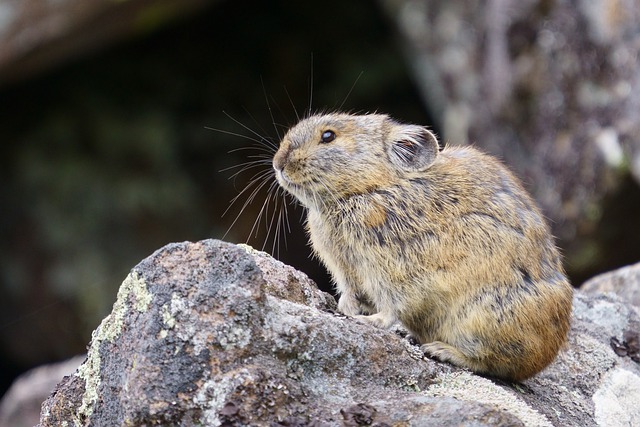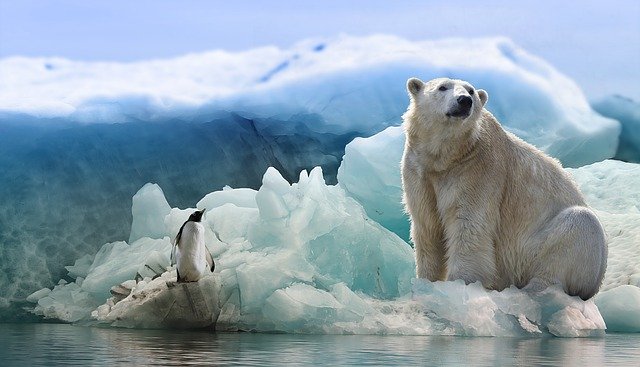June 21, 2017
By Kate Bartholomew, Atlantic Chapter Conservation Chair
(Image by makieni777 from Pixabay) |
Once you reach the top of the mountain, there's no where left to go
(Image by Peter Fischer from Pixabay) |
The polar bear is in much the same predicament. So much of Ursus maritimus’s life cycle is tied to the Arctic sea ice — it’s a marine mammal — that the shrinking and eventual disappearance of that vital component of its environment is already negatively impacting the species’ chances of survival. Although the polar bear is thought to have diverged from the Brown bear (Ursus arctos) between 400,000 and 600,000 years ago and has survived past episodes of climate warming, proving itself capable of adapting to some degree, that was before the ubiquitous presence of technologically intrusive humanity. Today, when polar bears seek out new sources of food — new territories — they inevitably risk encountering humans, which, just as predictably, will always end badly for the bears.
Species already threatened or stressed hit hardest first
White Lemuroil Ring Tail Possum |
Of course, it makes perfect sense that a species already on the brink — or close to it — without accounting for the myriad alterations to its environment wrought by climate change, could much more easily fall over the edge into oblivion than a species that wasn’t already in such a weakened state. But even those robust, adaptable generalists are not immune to environmental changes.
What are some of the threats posed by climate change that impact our co-inhabitants of planet earth so dramatically? Patrick Barkham’s piece in The Guardian (January 19, 2017), while examining the ten species most endangered by climate disruption, also highlighted many of the threats. Rising sea levels will eradicate species whose habitat consists solely of areas just a few meters above sea level. Increasing ocean temperatures and acidification spell disaster for corals and all species dependent on them, as well as for any marine organism with a shell or exoskeleton. Then there is the ubiquitous interplay of phenology and synchronicity. Evolution has honed and fine-tuned interdependence among species and with the environment over many thousands of years. Now climate change is abruptly intruding on this symphony with cacophonous results.
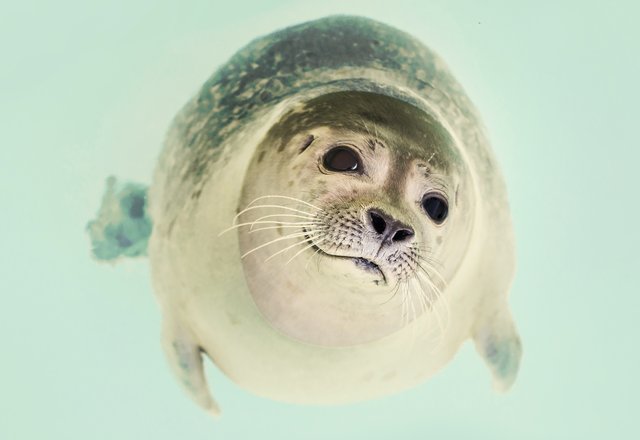 (Photo by Skitterphoto from Pexels) Ringed Seal |
Not as much attention has been paid to Antarctic species, but the Adelie penguin numbers have declined significantly since 1970. Warming ocean water provides fewer fish for their diet, meaning they switch to less nutritious krill, and earlier melting at nesting sites brings higher infant mortality — eggs can’t survive sitting in pools of melt water.
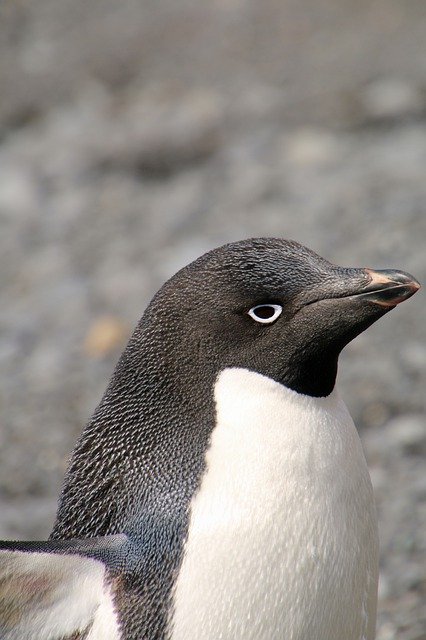 (Image by Sarah N from Pixabay) Adelle Penguin |
Timing can mean everything
With respect to abrupt climate change, phenology — or the timing of events — is, in a way, the Achilles heel of evolution and the handmaiden of extinction. The biosphere consists of a multiplicity of interconnected relationships that have evolved over thousands — even millions — of years. The fact that plants were able to colonize nearly every part of exposed land on the planet was due not just to the evolution of vascular tissues, but also to the development of a relationship — a symbiosis — with a group of Mycorrhizae fungi (and Rhizobium bacteria in legumes). Some of these relationships are broad, but many are very specific, examples of what is known as co-evolution.
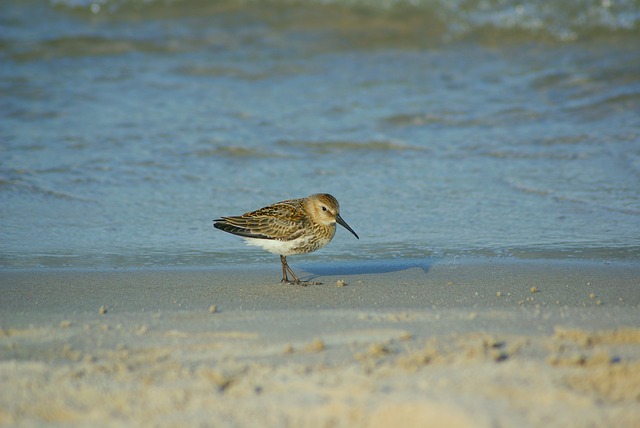 (Image by Dorota Wrońska from Pixabay) Baird's Sandpiper |
No species exists in isolation — including Homo sapien sapien. Everything is interconnected and interdependent. Humans tend to think of ourselves as set apart from the rest of life on the planet. We’re somehow unique, solitary and extraordinary, as if an enlarged cerebrum, self-reflective awareness, language, etc., give us the right to determine the fate of all other life on the planet. That strikes me as the extreme of self-centered narcissism and hubris.
As a prime example of this tendency, we need look no further than plans for adaptation being touted in various halls of power. For some, the answer to adaptation appears to be throwing multiple, rapidly developed, insufficiently vetted technologies (carbon capture and storage, various forms of geo-engineering, tampering with the ocean) at a vast global problem engendered by
centuries of willful ignorance about our impact on and interrelationships with all other living things. For others, the problem becomes one of structurally altering existing infrastructure to meet the demands of the altered environment for those already fortunate enough to be living there. For most of humanity, it will mean becoming climate refugees and hoping the 3% will have compassion for the 97%. None of these responses gives any priority to rest of the living biosphere.
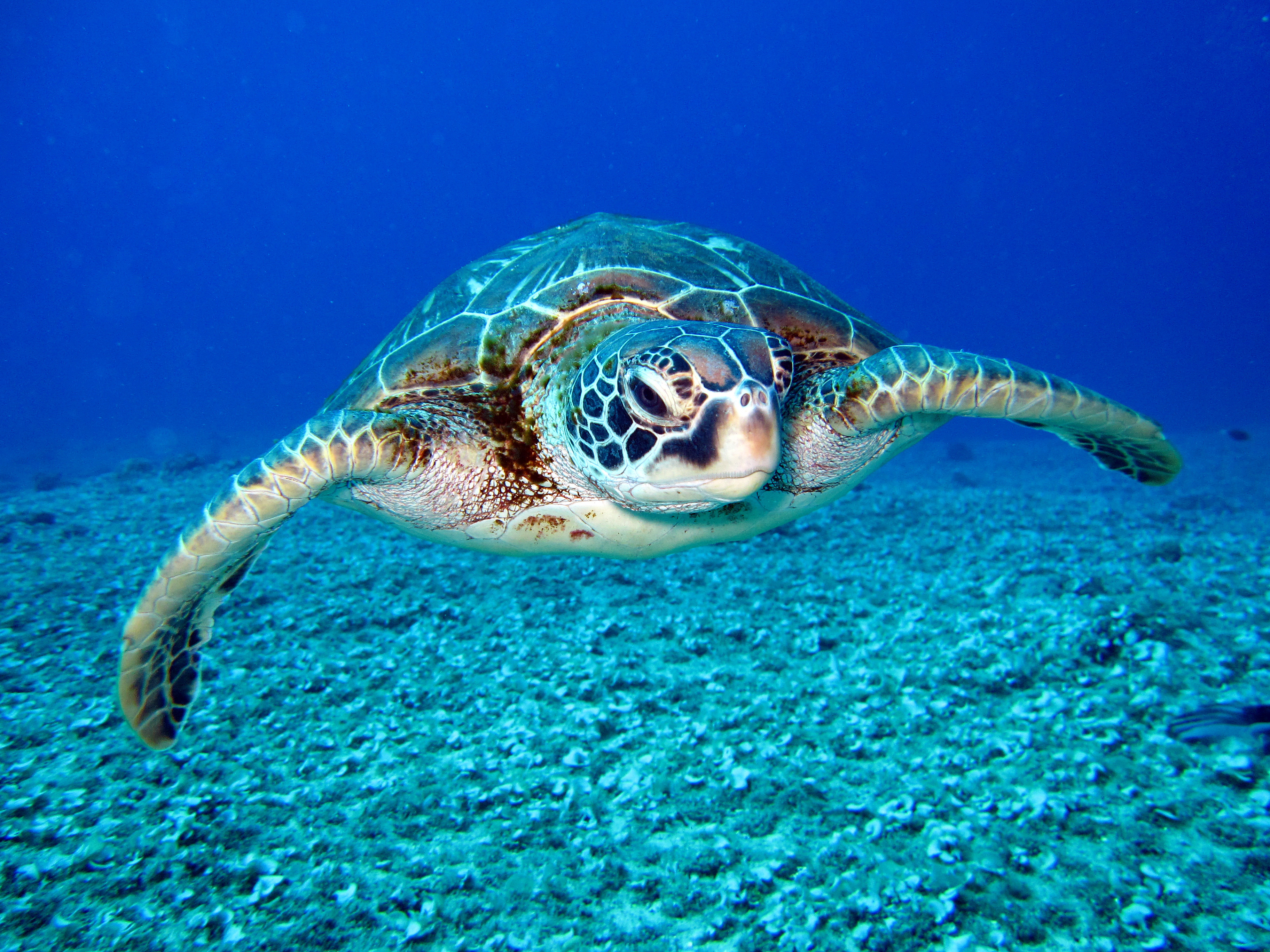 (Photo by Richard Segal from Pexels) Sea Turtle |
The microcosm that I am; that we are
I hate to disagree with Paul Simon and Art Garfunkel, but we aren’t rocks or islands, we are each, ourselves, ecosystems — microbiomes — and repositories of evolutionary history. Each human being contains roughly the same number of non-human cells (bacteria, archaea, fungi and viruses) as human cells, and this doesn’t include the microinvertebrates, bacteria and fungi that reside on the surface of the body. Some of our non-human residents actually exist as historic relics in our genomes, while others are helping us today by producing substances we need (our E. coli synthesizes Vitamin K for us).
It would therefore be prudent for us, before embarking on a self-centered adaptation crusade, to examine if and how climate disruption might directly affect our own micro-symbionts. The “other” is not only outside in the sky, the ocean and the forest, it’s also inside in the stomach, mouth, kidneys and lungs.
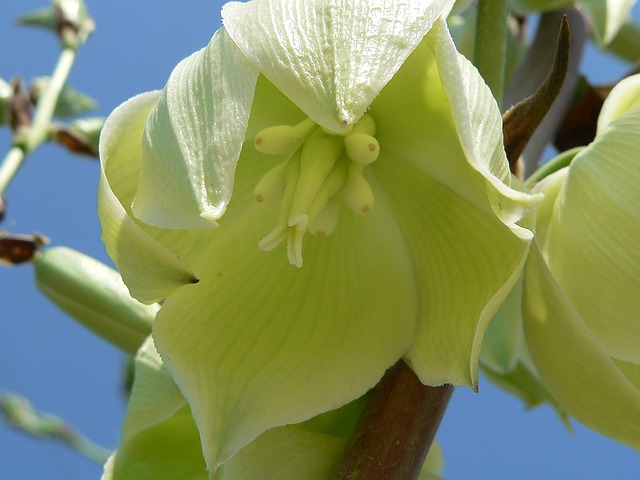 (Image by tdfugere from Pixabay) Yucca Plant |
Each species lost to extinction weakens the entire biosphere, which is an organic, living system. It’s capable of responding to extinctions — even to mass extinctions — but it’s uncertain if there has ever been one of this magnitude that occurred so abruptly.
